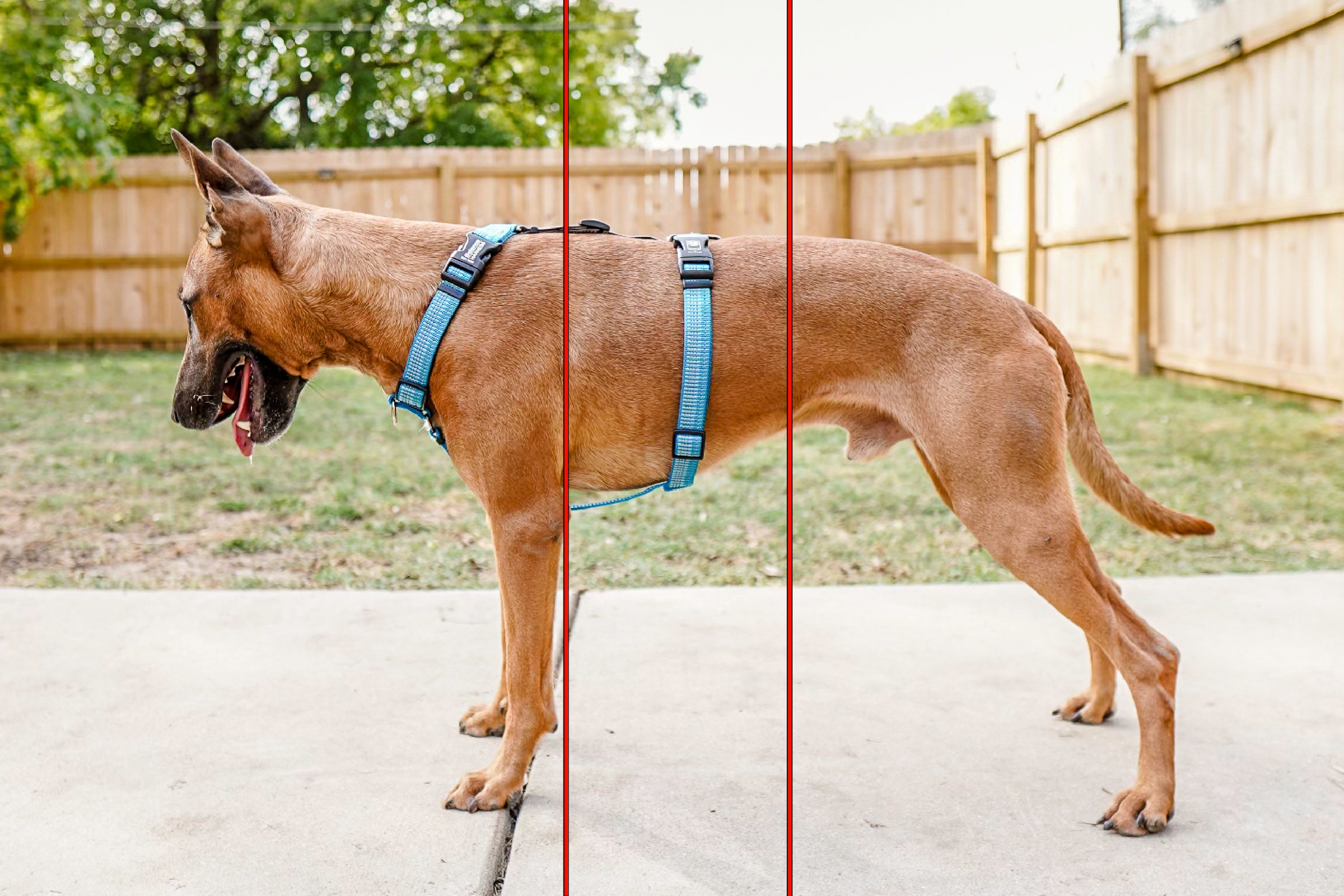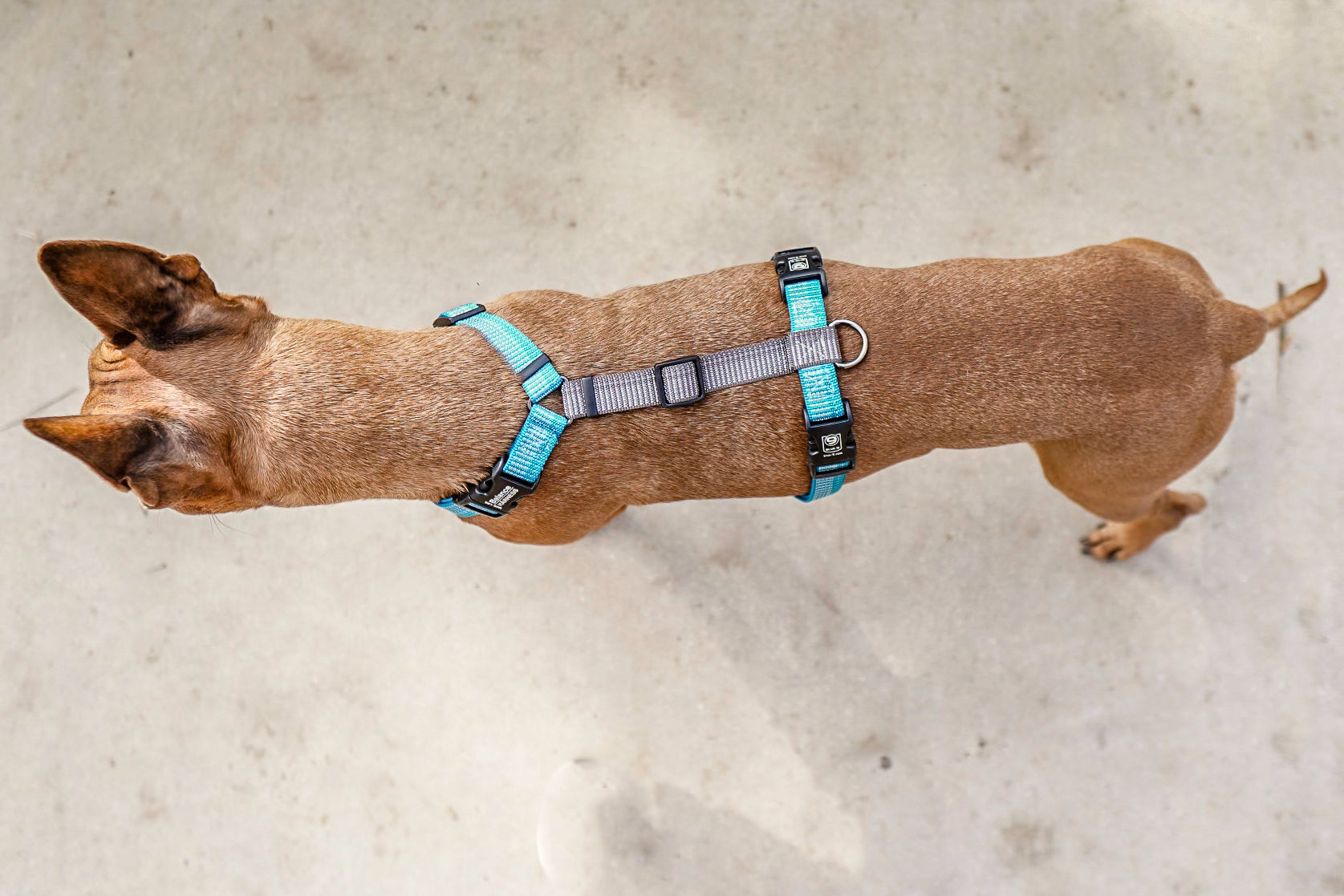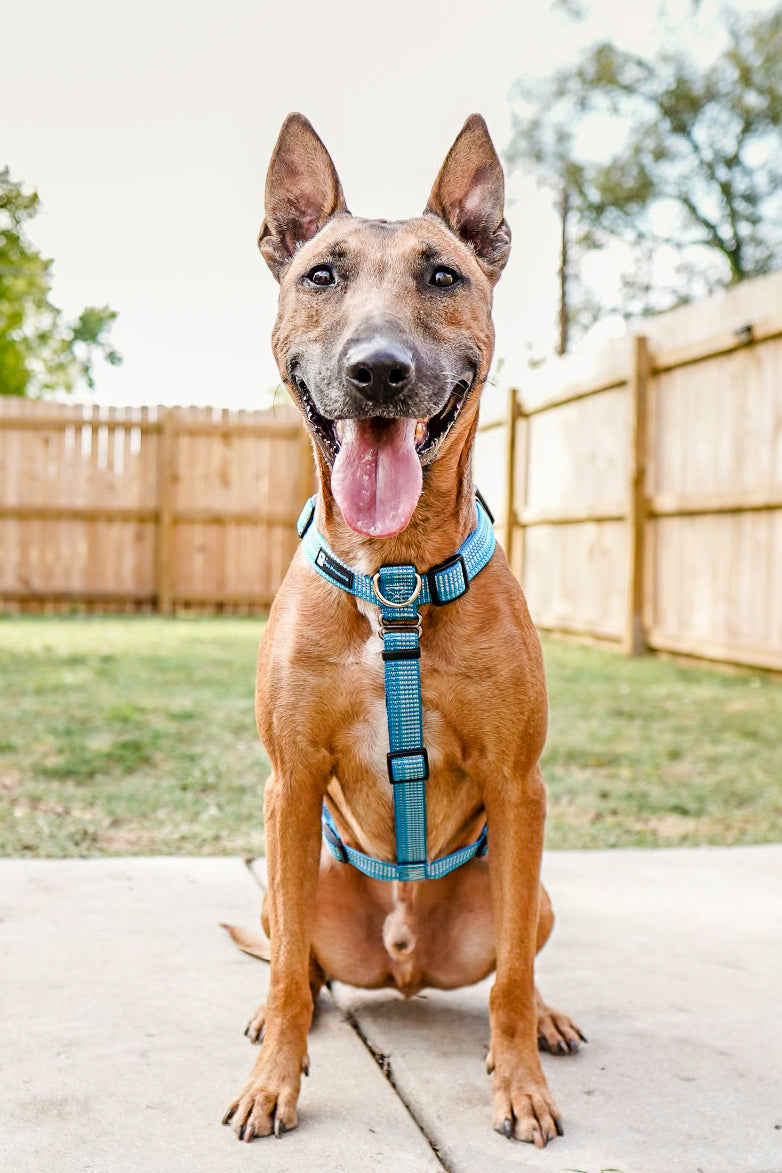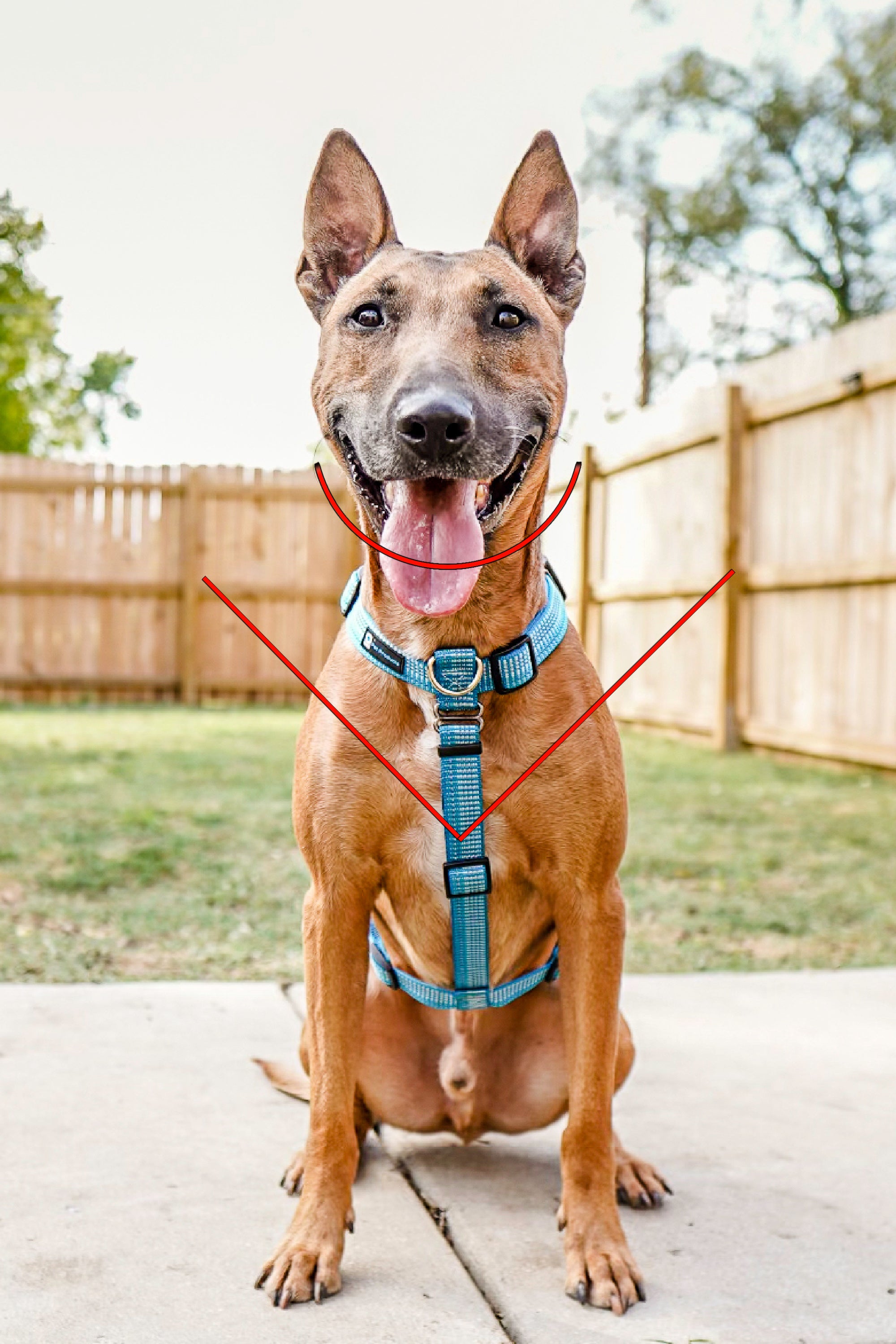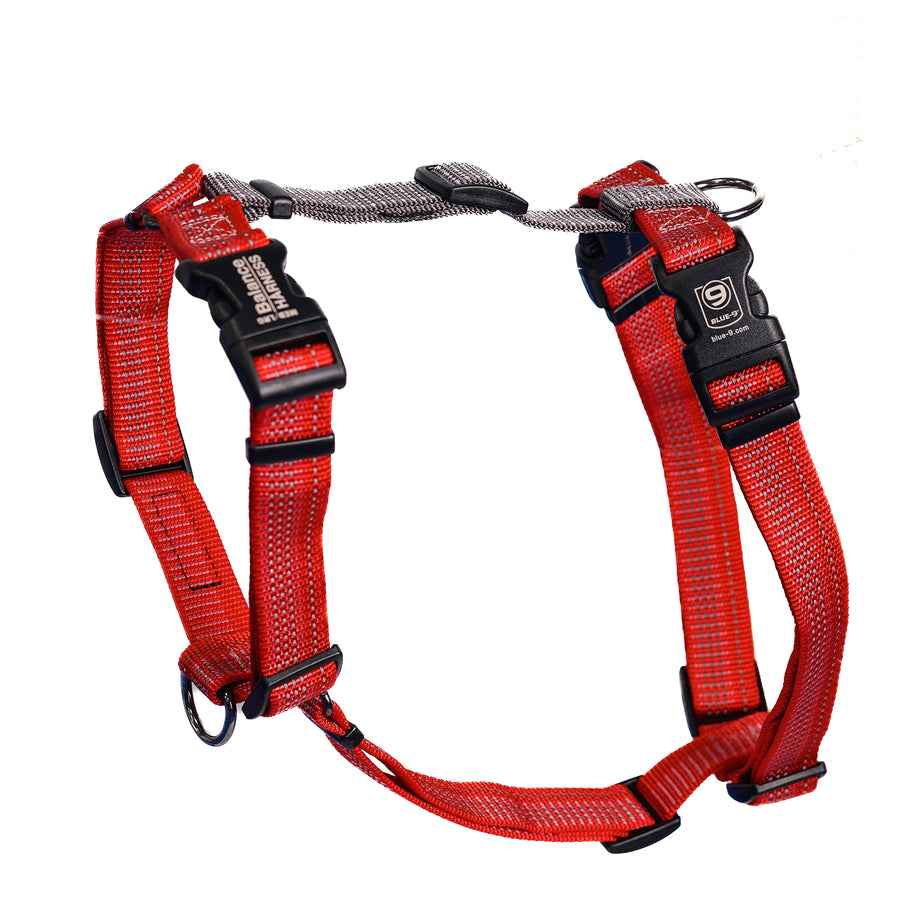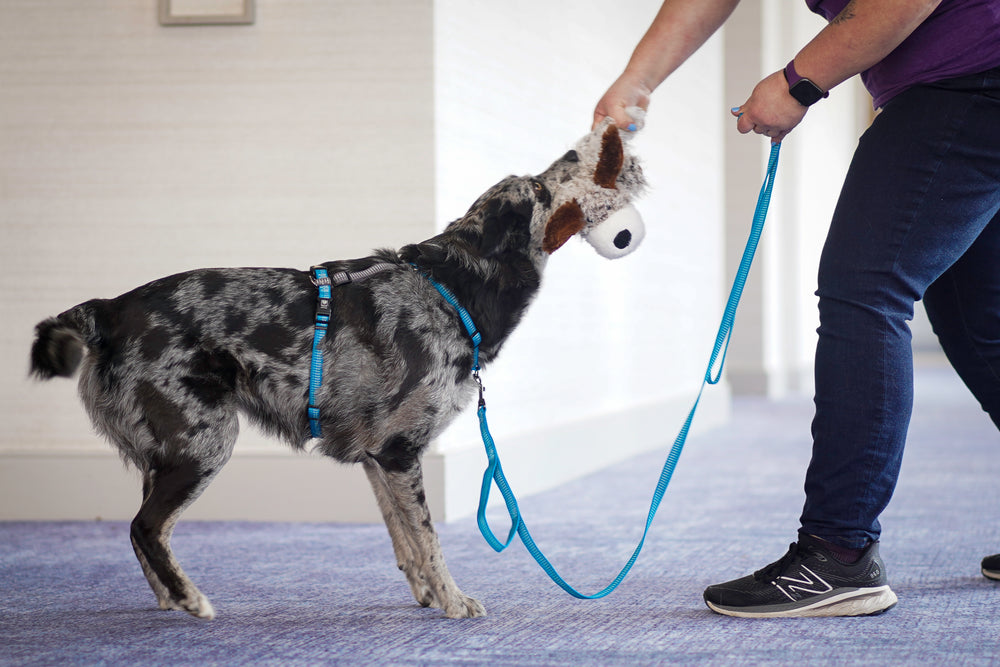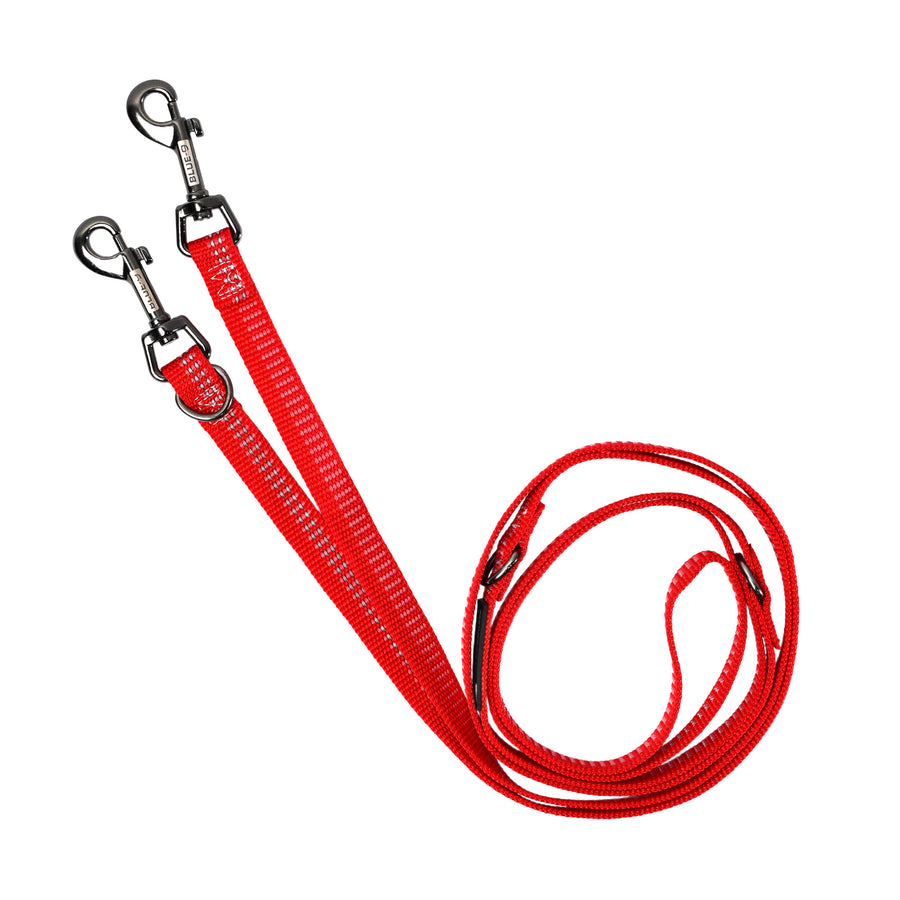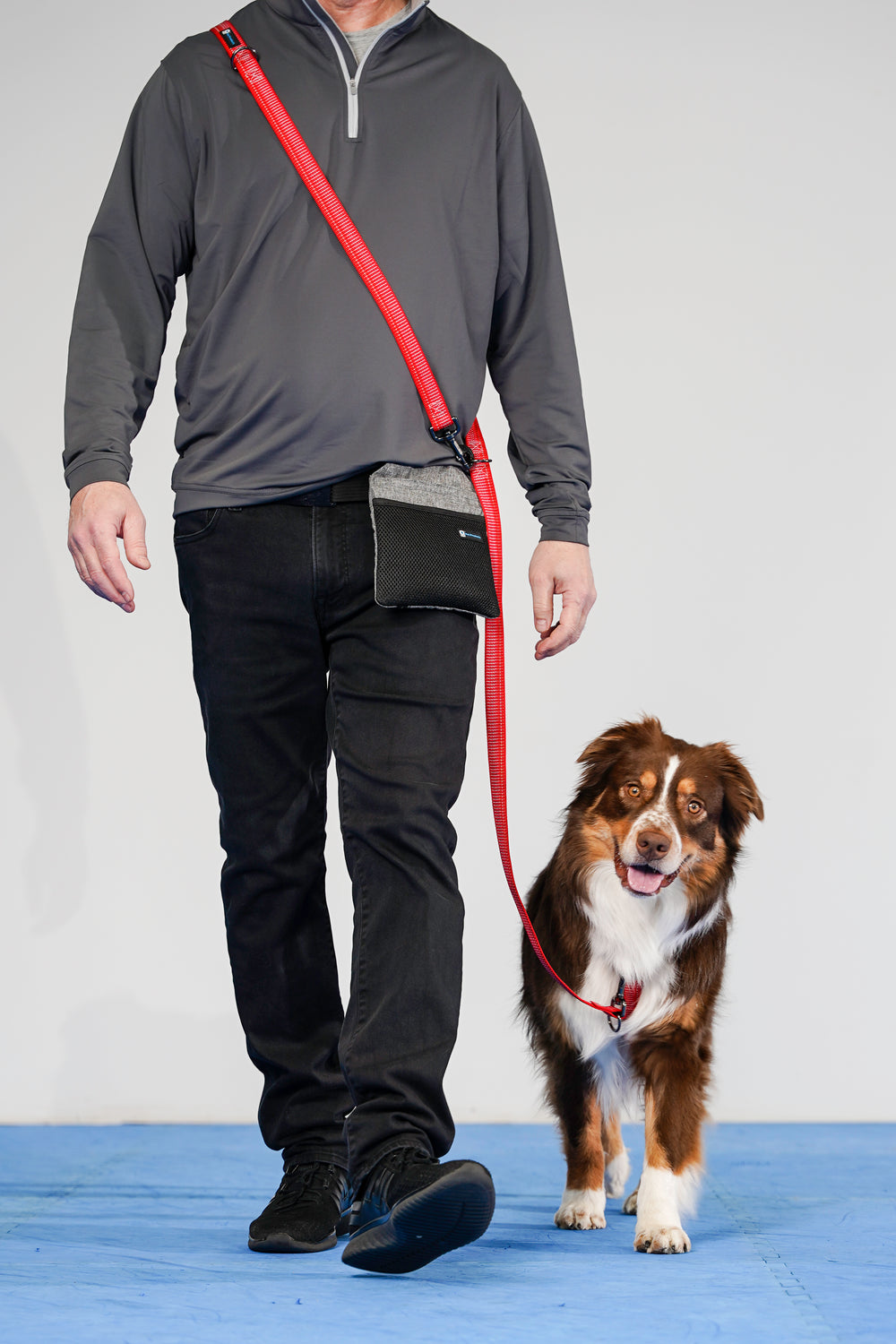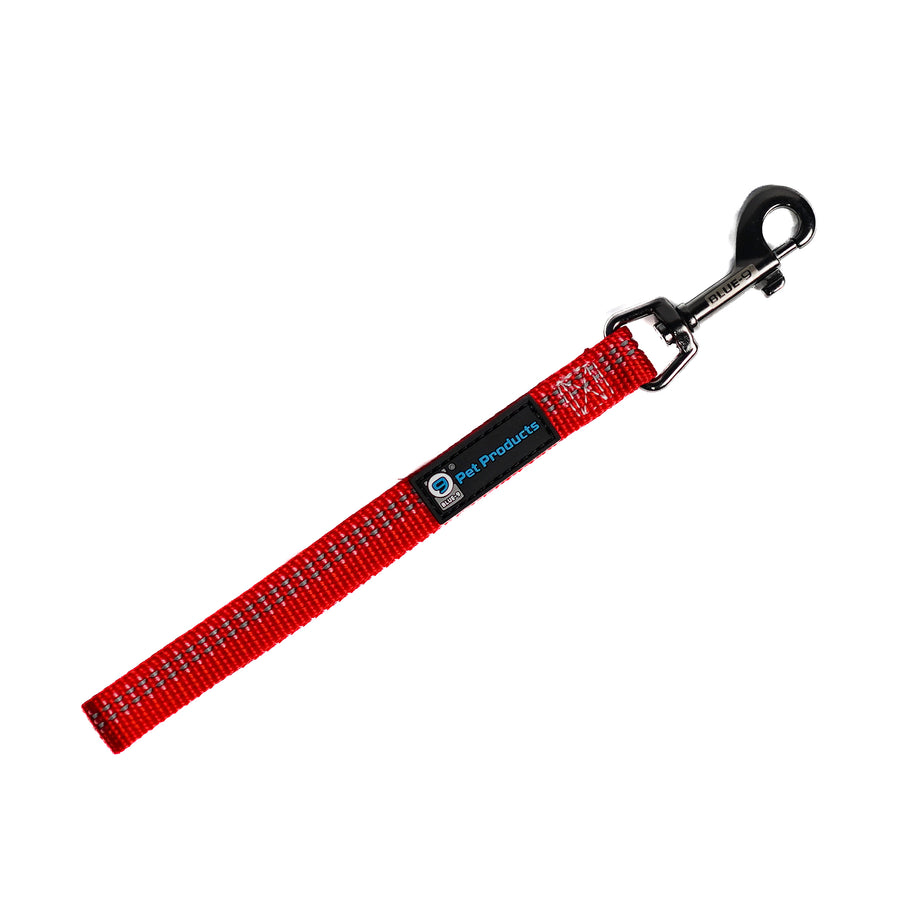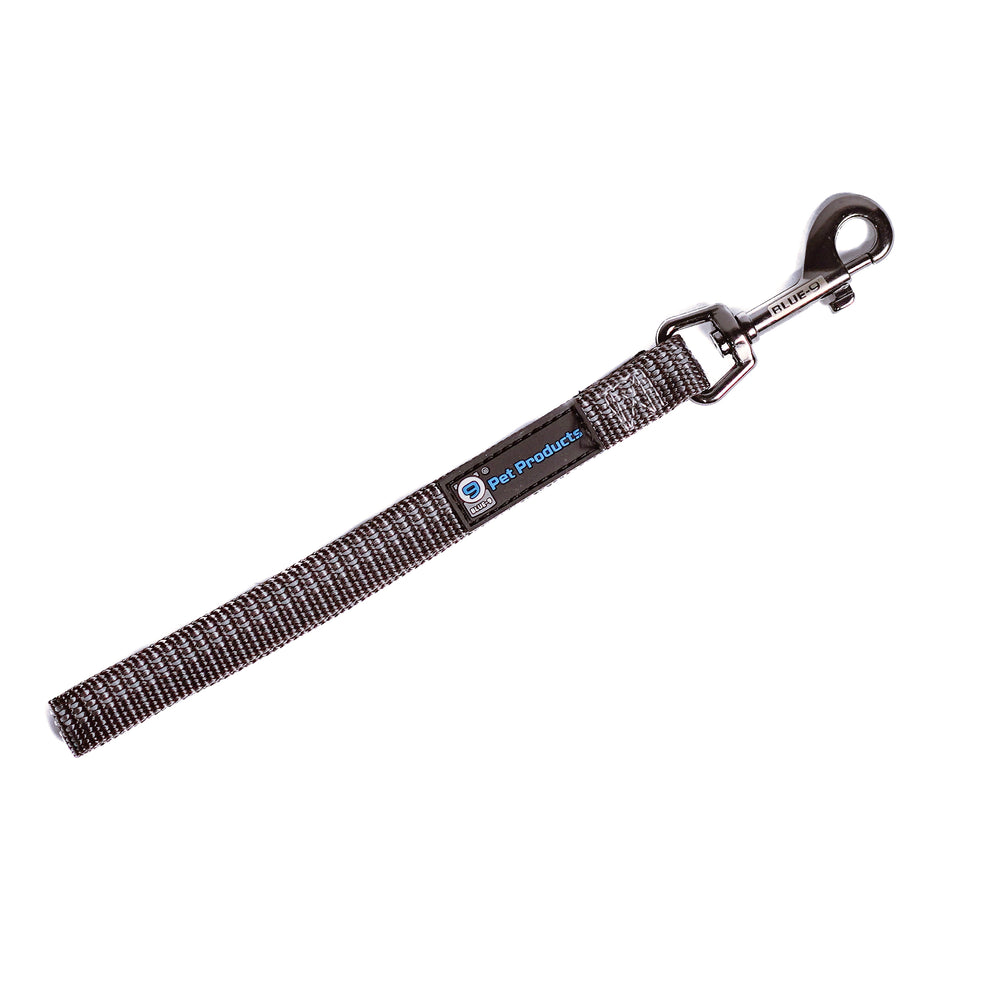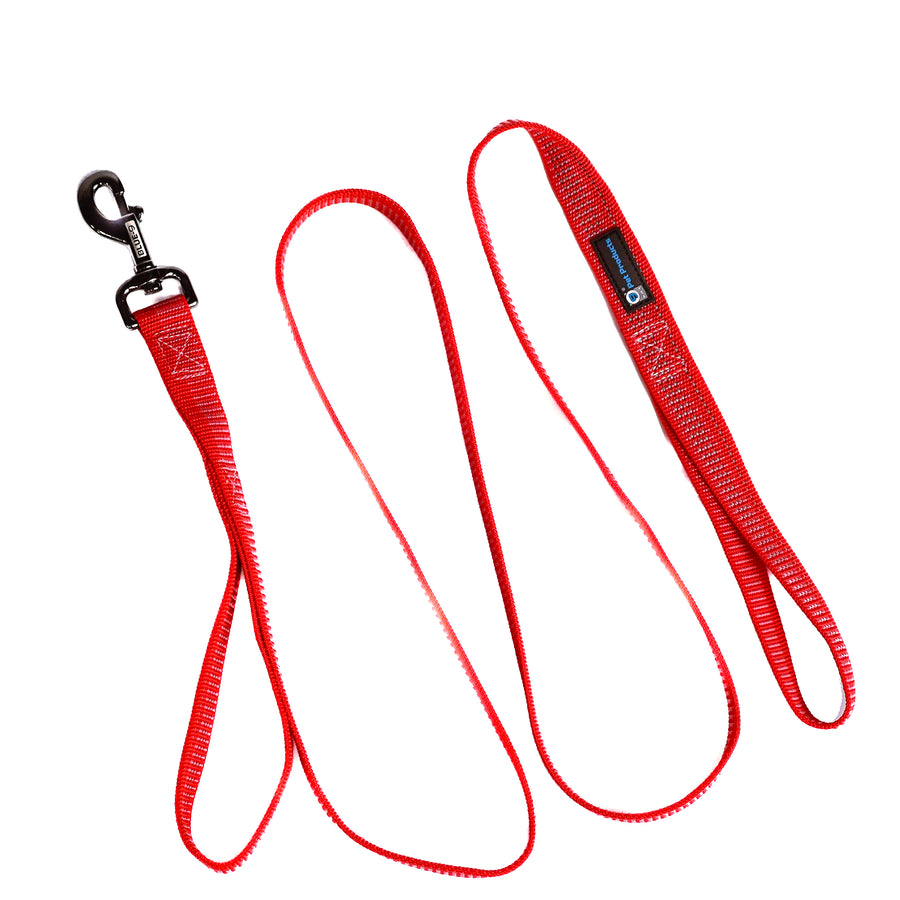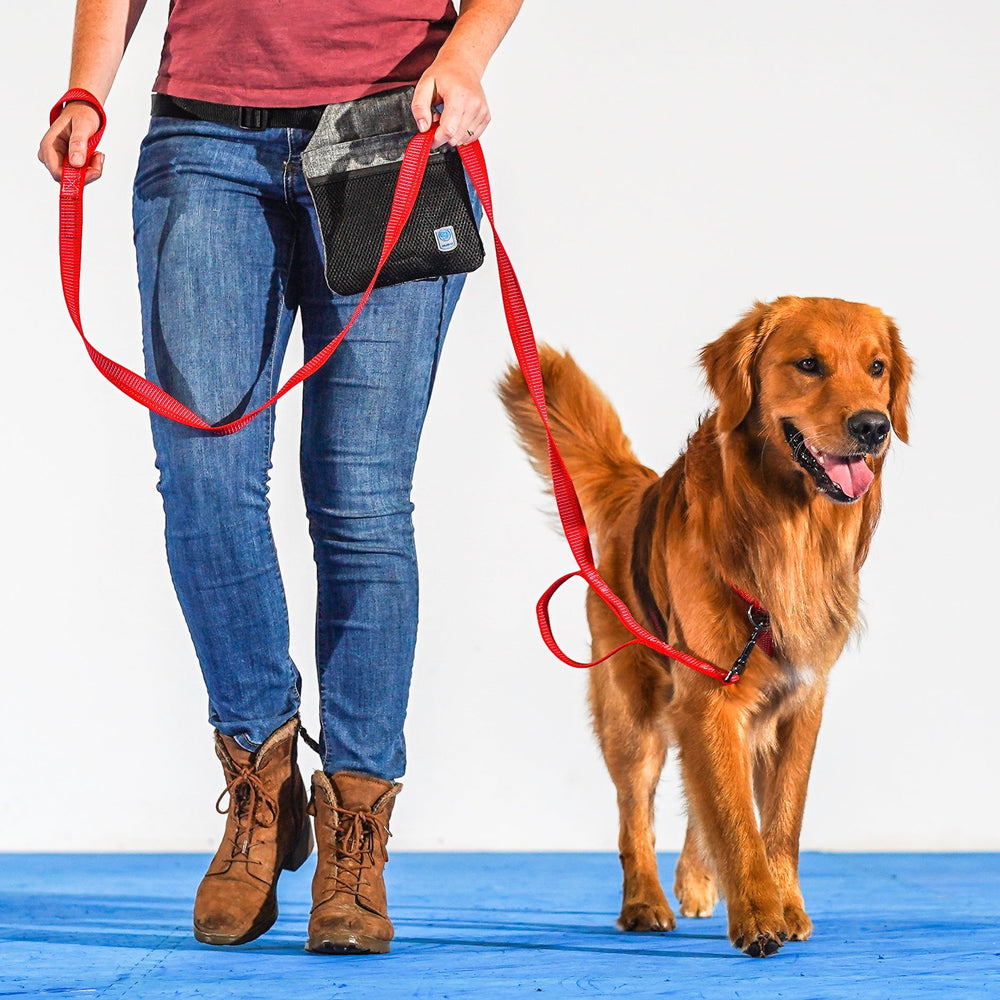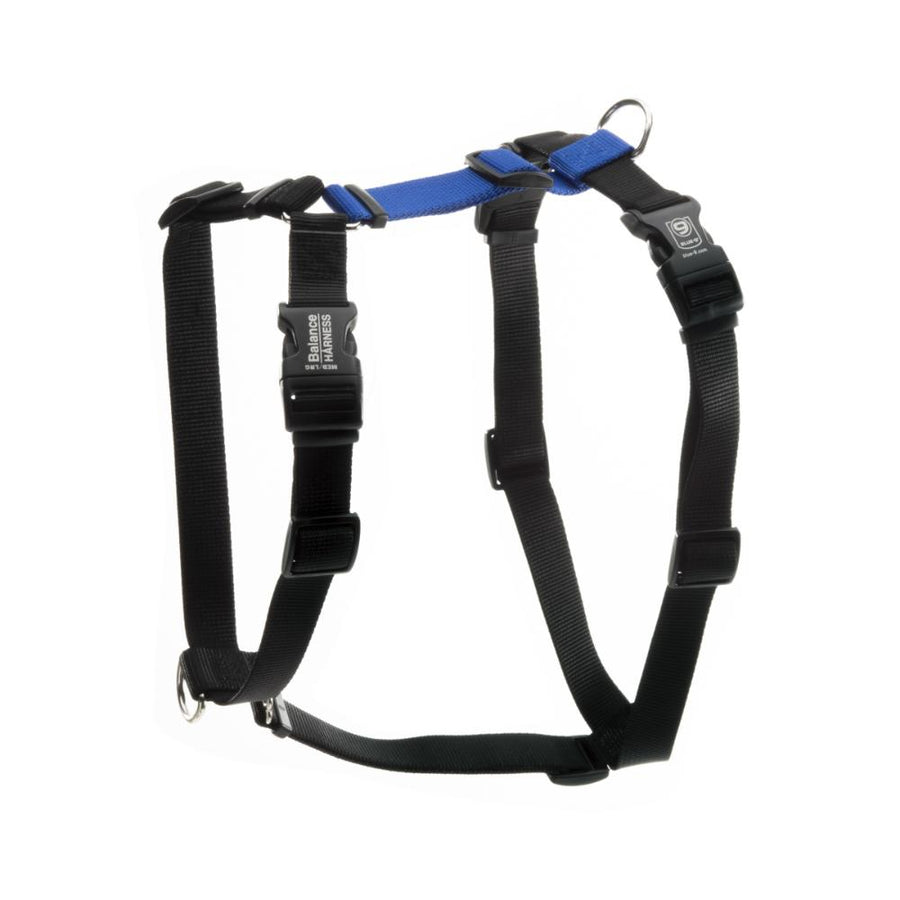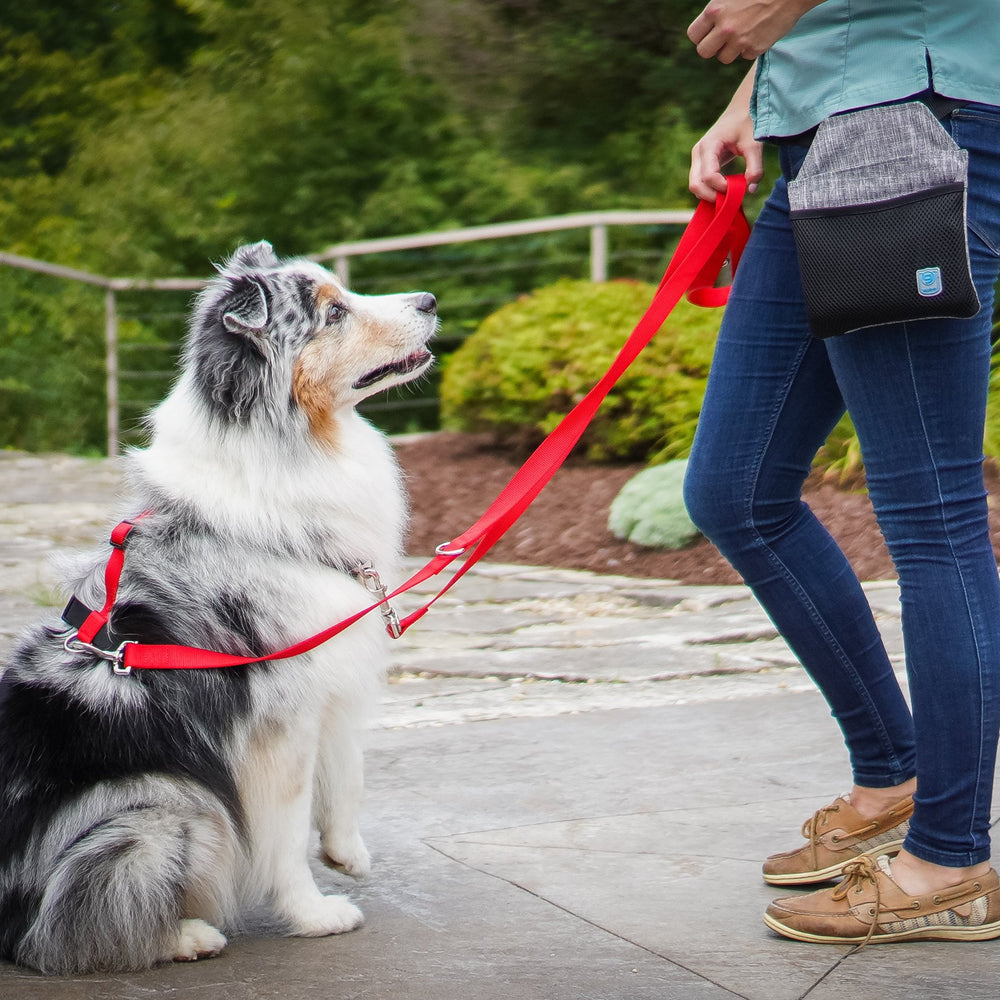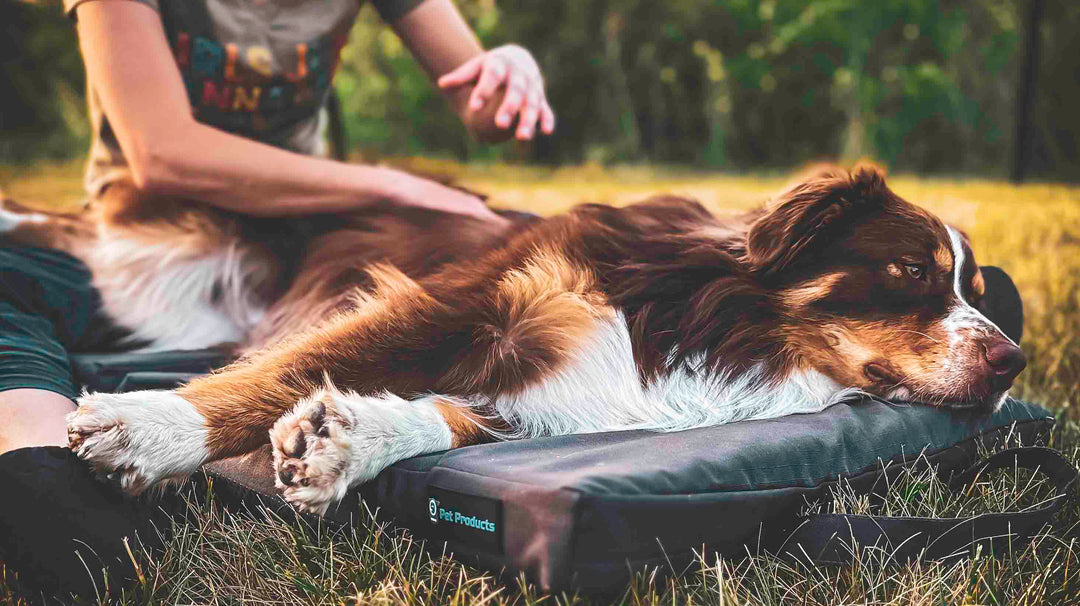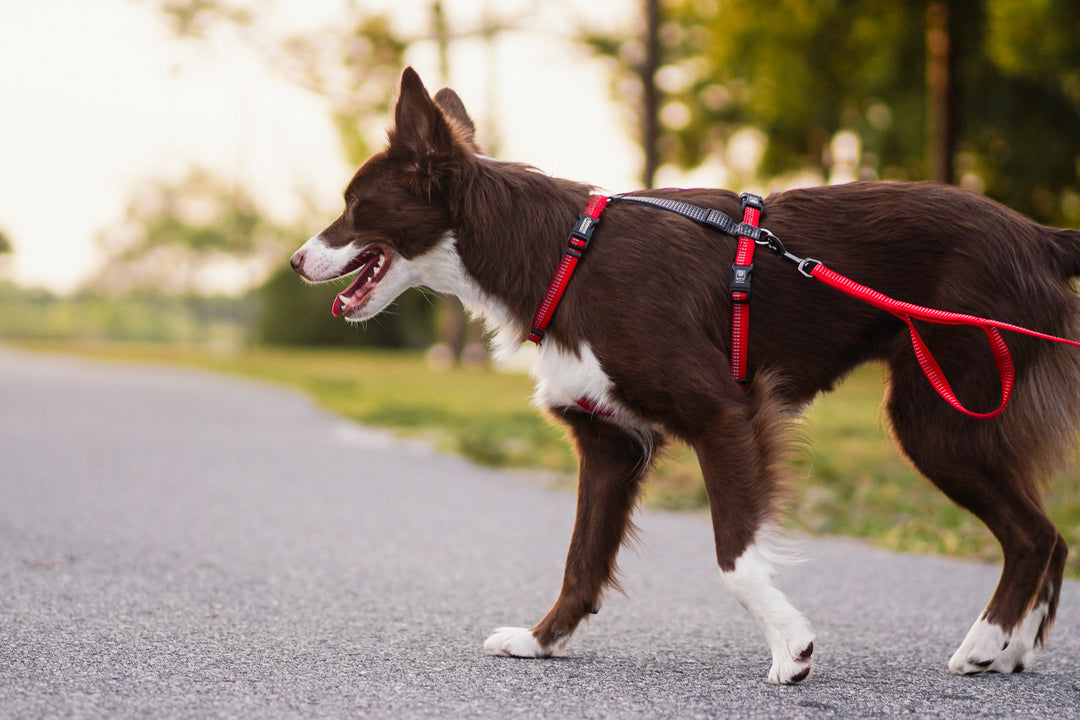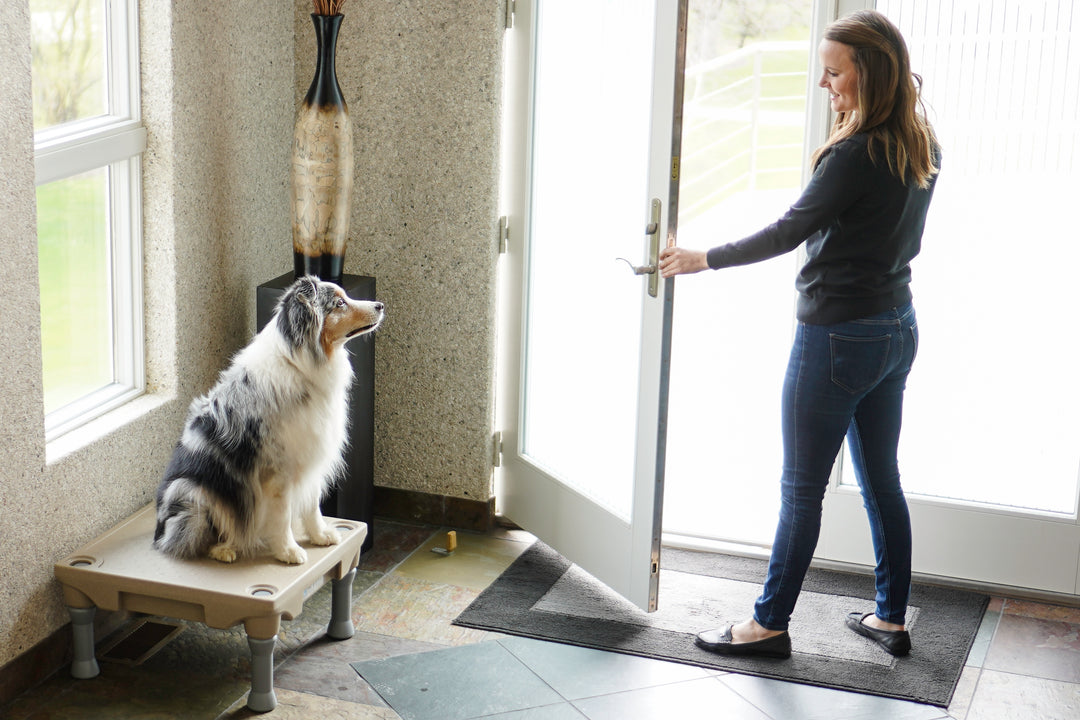Achieve Optimal Comfort and Functionality: The Key Questions for Fitting your Dog's Balance Harness
Is the front leash attachment point resting near the bony part of your dog's chest?
If it's too high, it can cause coughing when the dog pulls. If it is too low, the neck loop may rotate excessively.
Is the Girth Strap fitted around the ribcage?
If it's too far forward, it may cause chafing in the armpits; if it's too far back, it might press on the soft part of your dog's belly or abdomen.
Does your dog appear comfortable?
If your dog tries to chew at the straps immediately, turns to bite at the harness while walking, or plops down and refuses to move, these may be signs the harness is causing discomfort and needs adjustment.
Do you feel in control of your dog?
Be sure the girth strap is snug enough that your pup can’t slip out.
FAQ's
Yep, all front attachment harnesses will slide to one side or the other, especially if you have a strong puller. We recommend using a double attachment leash, like our Multi-Function Leash for more control.
To a certain extent, yes. The chest strap may gape when the dog has a lower head position. There should be enough length in the chest strap to accommodate the dog's movement when dog is standing with a neutral or elevated head position.
While the top strap and chest strap adjustments help with the placement of the girth strap (around the ribcage) there are other adjustments we can make that impact the placement of the girth strap. If you find that your girth strap is riding into the underarm area of your pup, try loosening the neck loop.
By lengthening/loosening the neck loop straps, we can make the girth strap sit further back on the dog's ribcage. By shortening/tightening the neck loop, we can shift the entire harness forward..
The Balance Harness is an excellent tool to help manage pulling. The front leash attachment point is designed to help give you more leverage when your dog pulls. It can also help with redirecting the dog back toward you so that you can re-engage them in polite walking. If you're interested in learning more about how to teach your dog to walk nicely, check out our Loose Leash Walking videos.


